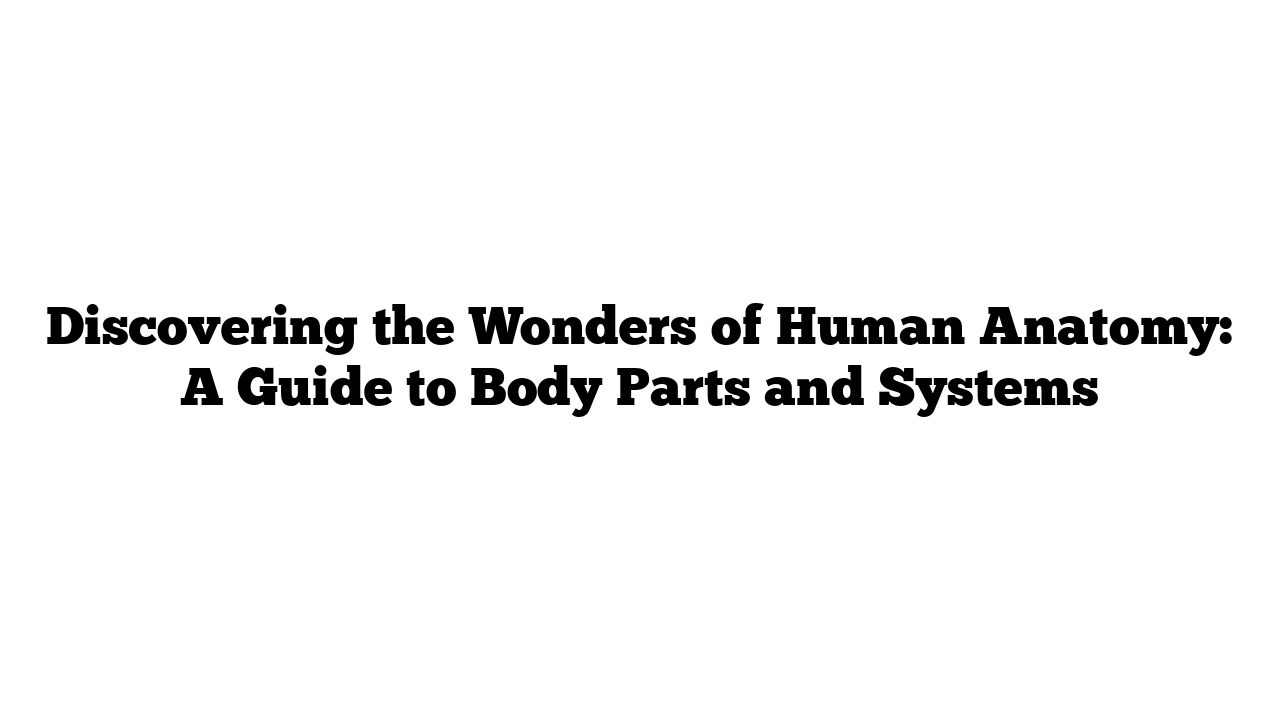Welcome to our exploration of the human body! Join us on an exciting journey through the intricate anatomy from head to toe. Together, we will uncover the marvels of human physiology. Are you ready to discover the wonders within us? Let’s dive in!
Head and Face
- Head: The upper part of the body containing the brain and face.
- Hair: The strands that grow from the skin on the head.
- Forehead: The area above the eyes and below the hairline.
- Eyebrow: The strip of hair above each eye.
- Eyelash: The hairs that grow on the edge of the eyelids.
- Eye: The organ used for seeing.
- Ear: The organ for hearing.
- Nose: The organ used for smelling and breathing.
- Cheek: The sides of the face below the eyes.
- Mouth: The opening through which we eat and speak.
- Lip: The fleshy borders of the mouth.
- Tongue: The muscle in the mouth that helps with tasting and speaking.
- Tooth/Teeth: Hard structures used for chewing food.
- Chin: The lowermost part of the face.
- Jaw: The bone that holds the teeth.
- Neck: The part of the body that connects the head to the torso.
- Throat: The passage that connects the mouth to the esophagus.
Upper Body
- Shoulder: The joint that connects the arm to the body.
- Arm: The limb that extends from the shoulder to the elbow.
- Elbow: The joint between the upper arm and the forearm.
- Forearm: The part of the arm between the elbow and the wrist.
- Wrist: The joint connecting the hand to the forearm.
- Hand: The part of the body used for grasping and holding.
- Finger: The digits on the hand; includes:
- Thumb
- Index Finger
- Middle Finger
- Ring Finger
- Little Finger
- Palm: The inner surface of the hand.
- Knuckle: The joints of the fingers.
Torso
- Chest: The front part of the body between the neck and abdomen.
- Breast: The front part of the chest, particularly in women.
- Rib: The bones that form the ribcage.
- Abdomen: The area between the chest and pelvis.
- Navel: The belly button.
- Waist: The area between the ribs and hips.
- Hip: The joint connecting the legs to the torso.
- Back: The rear part of the body.
- Spine: The column of bones that supports the body.
Lower Body
- Leg: The limb used for standing and walking.
- Thigh: The upper part of the leg.
- Knee: The joint in the middle of the leg.
- Calf: The back part of the lower leg.
- Ankle: The joint connecting the foot to the leg.
- Foot: The lower part of the leg used for standing and walking.
- Toe: The digits on the foot; includes:
- Arch
- Ball of the Foot
- In-Step
Muscles and Joints
- Biceps: The muscle at the front of the upper arm.
- Hamstring: The muscle at the back of the thigh.
- Gluteus: The muscle in the buttocks.
- Tendon: The tissue connecting muscle to bone.
- Ligament: The tissue connecting bones to each other.
- Cartilage: The flexible tissue at the joints.
- Joint: The point where two bones meet.
Circulatory and Respiratory Systems
- Heart: The organ that pumps blood throughout the body.
- Lungs: The organs for breathing and gas exchange.
- Blood: The fluid that circulates in the body carrying nutrients and oxygen.
- Artery: The blood vessels that carry blood away from the heart.
- Vein: The blood vessels that return blood to the heart.
- Capillary: The small blood vessels where exchange of substances occurs.
Digestive and Excretory Systems
- Liver: The organ that detoxifies substances and produces bile.
- Stomach: The organ that breaks down food.
- Intestines: The organs that digest food and absorb nutrients.
- Kidney: The organ that filters blood and produces urine.
- Bladder: The organ that stores urine.
Reproductive System
- Ovary: The organ that produces eggs in females.
- Testicle: The organ that produces sperm in males.
- Uterus: The organ where a fetus develops in females.
- Penis: The male reproductive organ.
- Vagina: The female reproductive organ.
Skin and Nerves
- Epidermis: The outer layer of skin.
- Dermis: The layer of skin beneath the epidermis.
- Hypodermis: The layer of fat and connective tissue beneath the dermis.
- Nerve: The tissue that transmits signals throughout the body.
- Brain: The organ that controls the body’s functions.
Your Journey into Human Anatomy
As we conclude our journey through the human body, we hope you feel more informed about its parts and systems. Understanding anatomy is not only fascinating but also essential for better health awareness.
